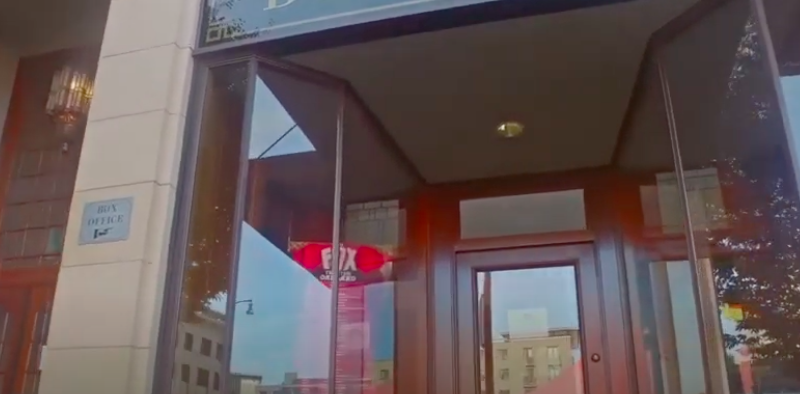Hot Docs 2022 presents I Didn’t See You There
I Didn’t See You There, directed by Reid Davenport, is a character-driven documentary filled with meaningful philosophical reflections set against exciting camera movements, angles, and images.
The director who is the protagonist of his film explores the challenges and experiences of the life of a wheelchair user juxtaposed against his exploration and identification with the freaks of a 19th-century freak show when a circus tent goes up in his Oakland neighborhood set against his desire to make a film without having to be seen, and from the perspective of his wheelchair. A new camera allows him to be more spontaneous, and to look for shapes and patterns without having to worry about meanings and words.
Scenes alternate between public and private spaces juxtaposed against his neighbourhood within the city of Oakland, California, and his former home in Bethel, Connecticut, where his immediate family lives. He captures on camera the challenges and experiences he faces navigating his wheelchair along the streets of Oakland and when accessing the public transportation system of the city. Cars and people block his right of way, honk their horns when he attempts to cross an intersection, and he must contend with navigating narrow passages. Even though Oakland’s transportation system is accessible, to access the subway platform, he must do so through a circuitous route, and he faces challenges boarding and getting off buses. When getting on the bus, the driver takes control of the situation and tells him where to position his wheelchair, ignoring Davenport’s lived experiences. Even when flying, getting on and off planes, he must rely on the goodwill and help of others to do so. And he doesn’t want to be manhandled in the process. No one does.
In spite of him being the subject of his own film, we never really see Reid. We catch glimpses of him reflected in storefront windows. We see parts of his body. His hand maneuvering the joystick of his power wheelchair. We see just his upper body and torso when he comes into the camera’s frame of reference when it’s in a fixed position. We see his lower extremities like in the shower scene. We see his moving shadow cast by the sun on the sidewalk as he glides his wheelchair with the joystick and when he is ambulatory and walking along the streets of Bethel. He’s there but not really there which is dramatized in the film and is exacerbated by his experiences as a user of a wheelchair to get around which creates tension and moves the narrative. The scene where he discovers that a power cord has blocked his access to his apartment unit visually contextualizes the alienation he experiences. Even when not in use, it’s a blatant disregard and an egregious action to block access. Why aren’t we getting this message?
The soundtrack composed of music, ambient sound, background noise, voice-overs layered over images, and snippets of dialogue set the tone for the film, and allow us to experience Davenport’s world. The ending scenes when he takes us on an unimpeded joy ride through the streets of Oakland in his wheelchair were stupendous. He lets us experience what it means for him to be free and unencumbered. Davenport has succeeded in creating an intimate portrait of himself where his humanity shines through and of his world where he faces daily challenges, explores questions of identity and meaning, and deals with existential angst. This documentary is deserving of your attention and has tremendous educational appeal shining a light on what it means to live in a wheelchair and see the world from the perspective of a user of a wheelchair.
Watch a clip below of I Didn’t See You There
I Didn’t See You There will be at Hot Docs 2022 on
TIFF BellLightbox 1
May 6 @ 1:45pm
Online streaming for I Didn’t See You There is available for five days starting on May 4 at 9:00 AM.
Tickets for the film can be bought here


